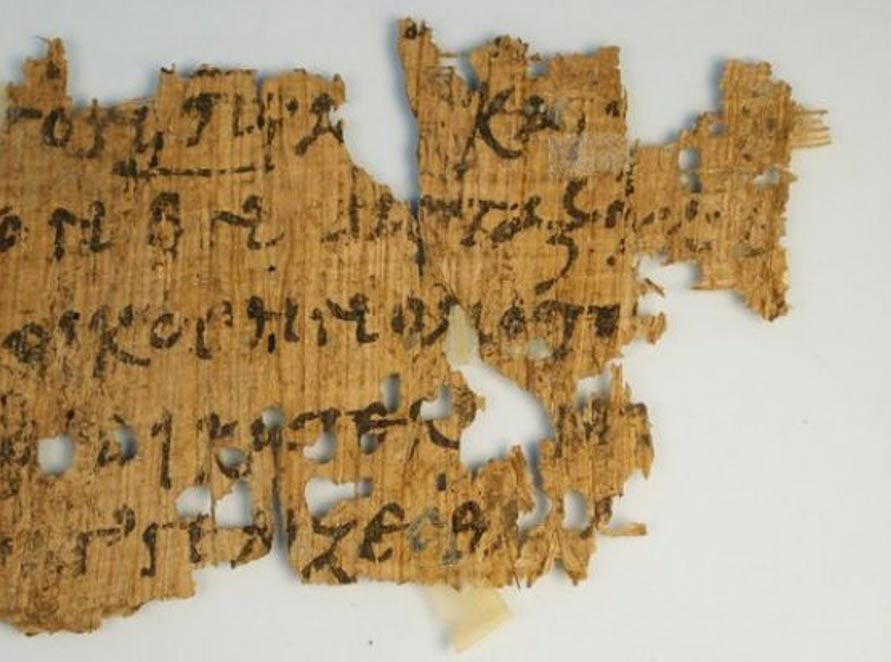Priceless Ancient Papyrus with Gospel of John Extract Found on eBay for $99
A scholar of early Christianity at the University of Texas has announced his discovery earlier this year of a priceless fragment of the New Testament written in ancient Greek – for sale on eBay with an opening bid of just $99.
The New York Times reports that the ancient papyrus fragment, was spotted by Dr Geoffrey Smith, who persuaded the seller to pull the item from eBay and allow him to study it.
“The credit-card-size papyrus, which Dr Smith dates from around AD 250 to AD 350, contains about six lines of the Gospel of John on one side and an unidentified Christian text on the other,” writes the New York Times. “If Dr Smith’s analysis is correct, it is the only known Greek New Testament papyrus from an unused scroll rather than a codex, the emerging book technology that early Christians, in sharp contrast to their Jewish and pagan contemporaries, preferred for their texts.”

Two sides of the Papyrus Bodmer VIII, another Greek papyrus containing the New Testament (public domain)
According to Dr Smith, the ancient papyrus fragment was originally in the private collection of a professor of early Christianity at the University of Chicago, Harold R Willoughby, who died in 1962. It was placed on eBay by a relative of Willoughby, who found it in a stash of papers in his attic.
It is not clear whether the seller was aware of its true value or not, but Dr Smith told the New York Times that the seller was contacted by numerous collectors, who offered him “absurd amounts of money”.
It is fortunate that Dr Smith managed to convince the seller to allow him to study the item, as Greek New Testament papyri are extremely rare – only around 130 such papyri are known, and they are considered the earliest witnesses to the original text of the New Testament. In addition, only around 3% of Christian biblical texts that survive from the first three centuries AD are from scrolls, the rest are codices.
Dr Smith will be presenting his research on the fragment today at the annual conference of the Society of Biblical Literature in Atlanta. As for the treasure itself, Dr Smith has continued to persuade the seller to place the papyrus in a research library.
- Transcription of ancient manuscript suggests Jesus married Mary Magdalene and had two children
- Ancient Coptic text revealed to be divination tool for predicting the future
- Did Jesus Have a Wife? New Tests on Ancient Coptic Papyrus May Give Answers
There have been a number of examples in recent years of highly valuable ancient relics turning up in the most unlikely of places. Earlier this year, a 60-year-old Chinese farmer was found to have an old sword blade from the Qing Dynasty, which he found while digging in the ground and, not realizing its value, had been using it as a kitchen knife.

Old Qing Dynasty sword used as a kitchen knife. [Image via Chongqing Evening News]
Last year, an object pulled up by a plow in a field and used to prop open an office door, was identified by archaeologists as an extremely rare and valuable Bronze Age ceremonial dagger, known as a dirk, one of only six found in the whole of Europe.
There have also been cases of people buying trinkets for a few dollars at a market, only to discover they are priceless ancient treasures. In February this year, a man purchased an Egyptian seal for £12 (about $19) on a charity website, only to discover that it is a 3,000-year-old cartouche of Ramesses II.
Featured image: A papyrus fragment believed to contain lines from the Gospel of John, dating from A.D. 250 to A.D. 350. Photo: Geoffrey Smith, The University of Texas at Austin via New York Times



















